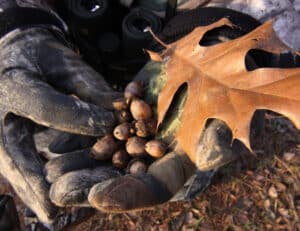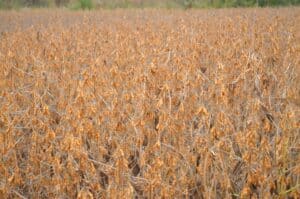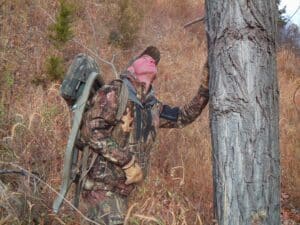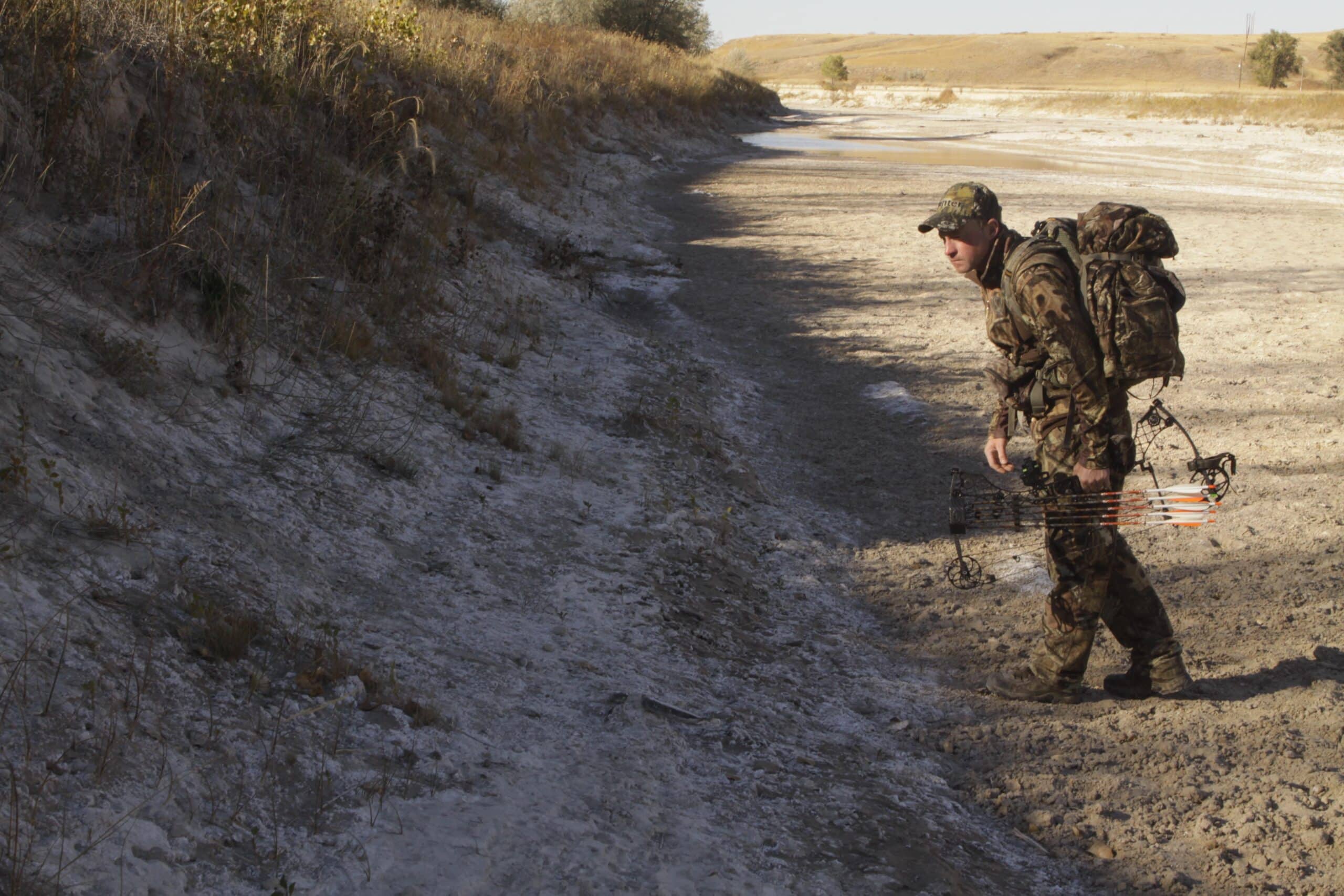What Is The October Lull?
Have you heard of the October lull? Like the rut lockdown, the term October lull may make you cringe, hesitate and even outright cancel a hunt. The meaning is as simple as the term itself. It signifies a slowdown in whitetail activity during October. For educated deer hunters, you realize that perceived slowdown only has an effect in the first half of the month. As whitetails pass the mid-month period, testosterone surges in bucks giving them a full tank by the time Halloween arrives. That full tank equals increased movement. Whitetail bucks reach peak testosterone a full two weeks before the majority of does come into estrus.
So, from September into the third week of October, do bucks really go underground? According to researchers, the answer is no. But the scenarios you experience may not be as simple as reading research. To help you decipher if you are experiencing a true October lull, let us start with the facts.
Just The Facts Please
Penn State’s College of Agricultural Sciences excels in some of the top whitetail research in the country. In addition to trapping deer and outfitting them with GPS collars to give you a true perspective of a deer’s lifestyle, these researchers blog. The Deer-Forest Blog provides many interesting aspects of deer behavior based on their studies and observations. In a blog penned by Duane Diefenbach, Ph.D., adjunct professor of wildlife ecology at Penn State, he was asked if there was an October lull for male whitetail deer. By dissecting research and adding GPS data to graphs comparing September and October movement, he produced a basic, straightforward conclusion found in the blog “October Lull.”
“If there is any difference, I don’t see it. There certainly isn’t more movement at night and the daytime movements are not any lower. What I haven’t shown in this graph is the variability about each point – it is quite large and none of these differences among weeks are statistically significant.”

Diefenbach continues in a following blog “October Lull – Take 2.” Here he makes a claim that the perceived October lull may be more of what hunters imagine and I am interjecting here, but from what they have heard over years of deer-camp stories. I raise my hand to believing tales shared around a campfire. Here is Diefenbach’s blog interpretation.
“In my opinion, the October Lull is more about hunter expectations than any change in deer behavior. Everyone knows the last three weekends of archery season will be the most exciting because that’s when rut activity increases dramatically. In fact, harvest data collected by the Pennsylvania Game Commission is evidence that hunter activity is lowest during the “October Lull.”
So far, the October lull debate revolves around bucks. What about does? Are they moving about the same, surging or decreasing in hoofed momentum? According to Diefenbach, females have a one-track mind focused on eating. Of course, bucks have no qualms about packing on the pounds either going into October, but females with fawns are playing catchup after nursing the newborns all summer. In the blog, “October Lull – Version 2.0,” he theorizes that females may actually move slightly less but suggests that could be due to finding an exceptional food source, like acorns, and camping on it. This even continues into the rut for a specific reason.

“We’ve written about this before. During the rut, bucks are looking for females. If you’re a female, you want to be found. The best strategy – stay put! Even home range sizes reflect this female behavior. During the rut home range size of females is no larger than during October.”
So, the October lull may not be as real as you first thought, except for a slight slowdown in female movement. The big take away though, is that every region of the country and even micro-regions, have peculiar and distinct characteristics regarding deer behavior. Use the previous information to formulate a plan, but adapt it to what you know for sure is occurring on your property.
Are You A Believer?
If you continue to believe in UFOs and the October lull, you may be based in your assumptions. Although research may show deer are still moving at near-normal activities, certain elements could make it appear there is a lull in your hunting backyard. Food is a fitting example.
Unless you are hunting a drought-stricken area, browse may be plentiful including acorns, chestnuts, apples, plums and other soft and hard mast species. A local herd of deer could spend a week or more in the vicinity of a hot mast producer as they gobble up the seasonal favorite. This food campout may mean your food plot-trail cameras suddenly turn off as deer movement shifts to a canopy concealed area.

The same phenomena occurs when soybeans and other fall crops peak, thus attracting deer. A bachelor group of bucks may vacate a hay meadow and move miles to take advantage of a thriving agricultural field. Vigilant scouting is necessary to help you adjust hunting sites or dates.
Moving into an interior location on a corridor leading to mast offers a chance at dine and dash deer. Oftentimes, I will establish a mock scrape along a mast-focused trail for further enticement and a stopping point to get a standing shot.
You also need to consider the uncomfortable factor. Like you, deer do not enjoy moving about in unpleasant weather. Why? First, going into October whitetails are fatter than any time of the year. Does are fattening to regain weight after raising fawns. Bucks are fattening to prepare for the rut. Does and bucks are also preparing for winter ahead. Bucks will add an additional 20 percent or more of body weight by the time November hits. Add to that their winter fur is coming in and moving about in warm weather becomes downright unpleasant. Now, add in an unexpected heatwave and bucks may move more at night instead of during daylight as they did earlier in the summer.
Instead of waiting for deer to appear near food plots or field edges, consider setting up near a hidden water source, preferably near a mast location defined by dense, cool cover. Deer require anywhere from two to six quarters of water per day and even when they camp near an acorn hotspot, they need water to aid in nutrition digestion.

Finally, deer hunting pressure in many states begins to see a dramatic uptick. Deer may simply react to the woodland intruders. Ample GPS studies indicate deer react to an increased presence in the woods by you. Many move more under the cover of darkness or readjust travel corridors to avoid you with a bedroom in the densest tangle on a property.
The October lull may not be a true occurrence, but a variety of changes in deer and the environment could change patterns in your deer woods. Scout and adapt to over come this perceived October lull. And remember. By the end of October, the lull will be replaced by the raging rut.
About the Author: Mark Kayser is a prolific outdoor writer and hunting television host. Mark spends his falls chasing elk and whitetails from the Rocky Mountains to the Midwest. From solo DIY elk hunts on public land to sitting in a treestand waiting to ambush rutting whitetail bucks, Mark lives and breathes the hunting lifestyle. For more about Mark Kayser and ways to follow him on social media, visit www.markkayser.com.


Featured
Juicy homemade jalapeno cheddar brats are perfect for grilling all summer long. They’re packed with all the right seasonings and fresh ingredients, making them extra tasty.

Featured
MeatEater and Moultrie Mobile join teams to bring hunters closer to nature.

Featured
These wild turkey skewers are tender and smothered in a homemade teriyaki glaze. Wild turkey sometimes gets a bad reputation for being a tough meat but when prepared properly using the steps in this recipe, the results are amazing.



